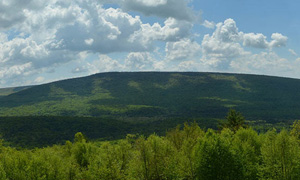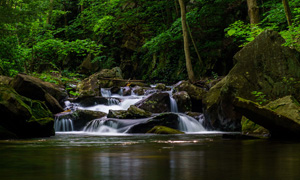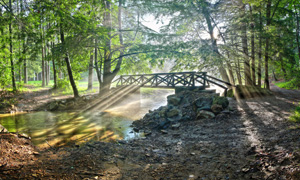
All winter long, birds enliven our days, brighten the trees, serenade in our backyards and city parks, and give us joy and hope. Now the air is filled with the sounds of other birds returning to our yards, forests, fields and wetlands. Absent for months, more than 360 species of migratory songbirds are returning from winter retreats in Central and South American to breed here. These migrations seem almost supernatural as billions of birds navigate with pinpoint accuracy between the places they breed and the places they spend the winter. These fantastic journeys occur in light and darkness, rain and drought, cold and warmth, on land and over the seas.
Long migrations are difficult. Many landbird migrants travel at night, leaving daylight hours for feeding and foraging. Adverse weather, strong headwinds, and manmade buildings and lighting systems all represent dangers to night migrants, yet these journeys continue to be accomplished. We know that over 25% of bird species are declining. Habitat loss has had the greatest impact on their populations. Migratory birds find their forest, wetland and grassland breeding grounds destroyed and fragmented by rapid, ill-planned suburban development. Poor forest management and misuse of pesticides have also taken their toll.
What can we do? Bird conservation can begin at home. Start by landscaping with native plants that offer food and homes for birds and by providing clean water. Providing food, cover and shelter for birds that visit our home landscape is a way to help. Be informed about and fight for responsible development and to preserve and restore wildlife habitat. Birds are our best form of natural insect control, eating tons of insects annually. They are beautiful to watch and brighten our days.
Even though spring has begun its northward journey, now is not the time to let your bird feeders go empty. Many of the berries and natural food that birds had earlier this winter are gone – and it will be a while before the next crop is ready. If you keep feeders full during spring months, you will witness the exciting colors and courtship rituals of the mating season. Birds benefit from supplemental foods from our yards during breeding months. Males need additional energy to defend their breeding territories and females need plenty of food to help produce eggs. Some songbirds share seeds with their mates in a courtship display called “mate-feeding”. Later you may see adults bring fledglings to the feeder. Make sure your feeders are kept clean and remove wet or moldy seed beneath.
Keep them happy and nearby and you might be treated to a nest to watch.
While we are outside tending to our gardens, we will see and hear the hopeful miracles birds provide for us. Celebrate and enjoy the ways in which birds enliven our days, brighten the trees, serenade in our yards and parks, and give us joy and hope. Happy Bird Days!
Susan Wilder
Penn-Cumberland Garden Club




